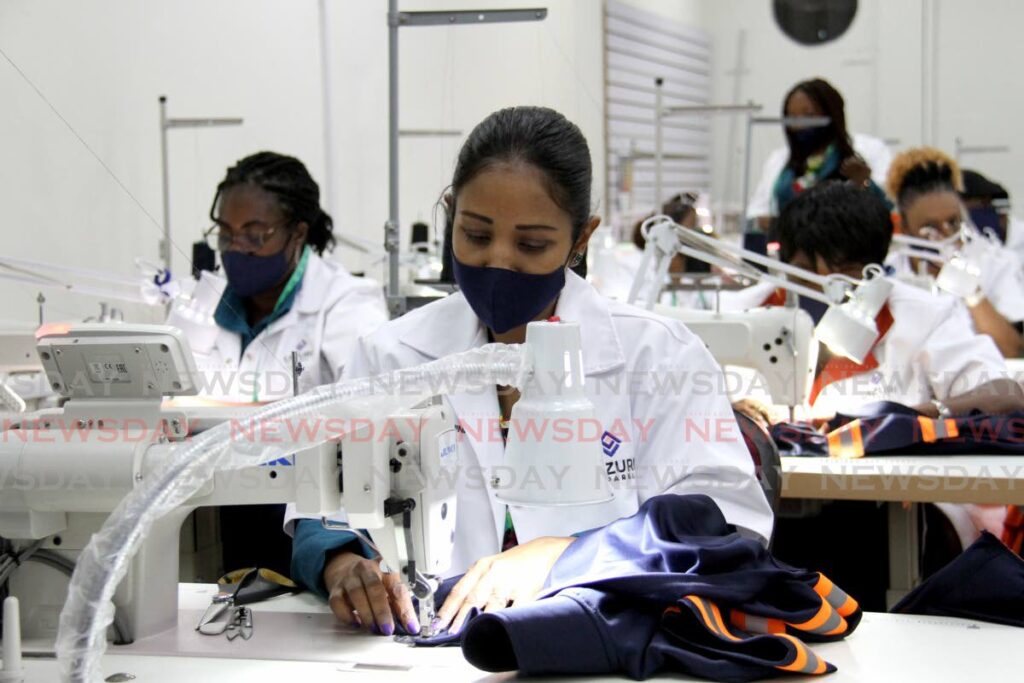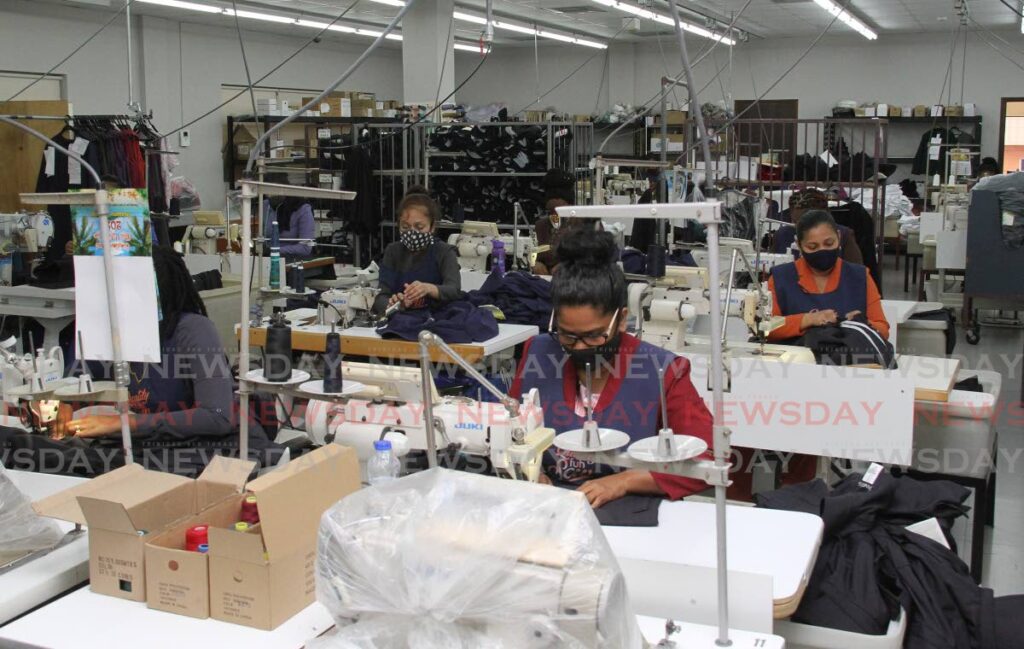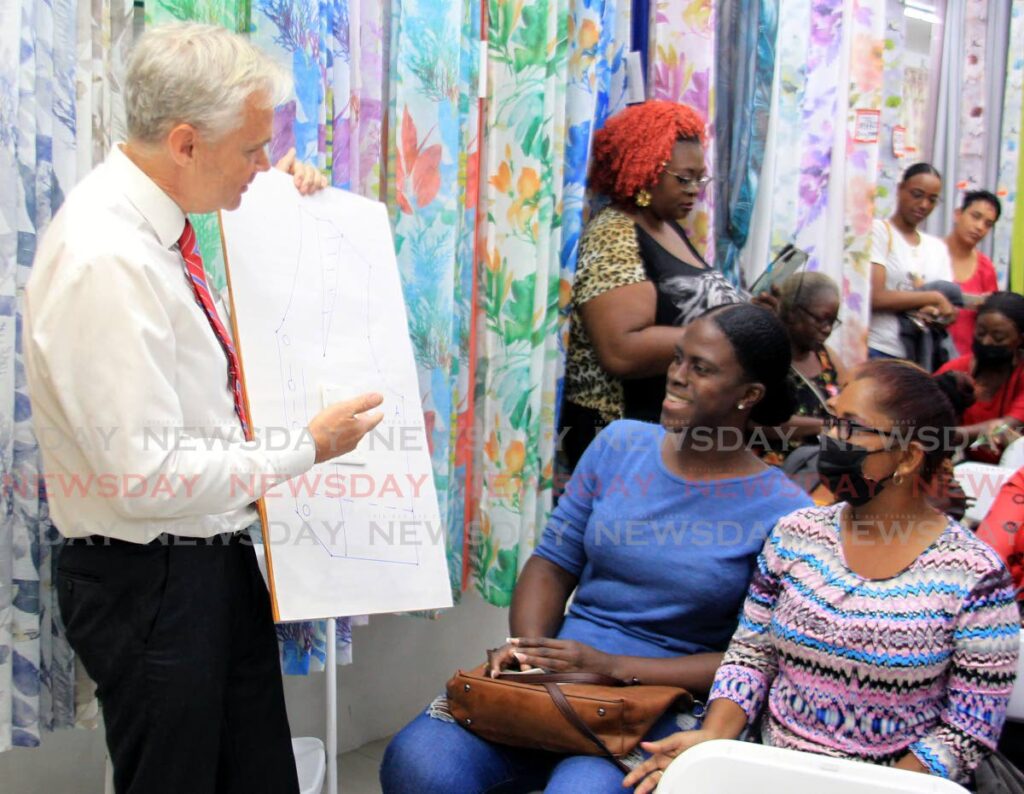Sew it is: Seamstresses make a comeback in clothing industry

Trade and Industry Minister Paula Gopee-Scoon's declaring there should be a local-content policy for Carnival costumes raises the question: are there enough skilled seamstresses and tailors to produce the volume needed to make this feasible?
This year several large bands were not able to fulfil their masqueraders' orders, as there were problems shipping costumes from China, where they are usually ordered, because of the numbers needed and the lower cost.
TT has a long tradition of people buying fabric and taking it to someone for sew. During the pandemic, many people turned to sewing to make extra money, for stress relief, and as a means of cutting costs.
Business Day spoke to several sewists (amateur sewers) in the local Facebook group Love And Stitches: Sewing Trinidad and Tobago, to find out their views on the sewing industry in TT.
Tricia Scott, of TNS Custom Stitches, said her interest began in home economics classes during the late 80s and early 90s, but she lost interest for a while. In 2016 and 2017, she took curtain and drapery and garment-construction courses offered by the ministry, as well as private classes, to develop further and become certified in sewing.
“Finding people to sew clothes to fit me how I wanted was the major reason that made me start sewing for myself.
"Then there's the inability of finding 'decent' clothes to fit well.
"Price is another factor that played a huge part in my decision, and then I decided to earn an income from my skill also.
Scott sews "dresses, skirts, pants for women and I would love to one day specialise in graduation/wedding dresses.
"I also make household items such as pillowcases, bedsheets, curtains, pillows and cushion covers.
"I sew mostly for family members and offer my services to others on an appointment basis.”

She said many people will buy readymade clothing for a “quick picker-upper,” while going to seamstresses for alterations. She said many people don't easily accept a seamstress's price over a store price.
She also said the industry is not widely recognised in formal institutions, with programmes geared toward people who are seeking to export.
“I think sewing should be reintroduced within the school system as a syllabus subject. Also, why can't entities such as Miss World, fashion shows, Carnival agencies, employ our local seamstresses to deliver the required products/garments, instead of having to source them from foreign bodies?
"And when I say employ our local seamstresses, I don't only mean the big names we have heard of: there are many small entities waiting to be discovered.”
Scott said she recently began offering classes, but has not had the reception she expected.
Another sewist, Isabella Scott, said she began sewing at five, for her dolls. She makes evening wear, work clothes, hair bonnets, turbans, dresses, pants, skirts and sleepwear for herself, family members and others.
“I find more people wanting my services especially after the pandemic.
"I teach a beginner’s sewing class, and I find a lot more people are coming to classes. I work from home at present and do most of my marketing on social media.
“The sewing industry in TT is full of creativity. Once we get the right doors open internationally, we will be a force to be reckoned with.”
Tiffini Cupid of Cupid DesignsTT said she began using her mother's sewing machine at 18 for smaller projects, but about six years ago, began teaching herself how to make clothing.
“I've always had a love for fashion for as long as I remember. I love being able to see fabric evolve into something wearable.
"I sew mostly clothing for myself and female clothing, hair accessories, and a few men’s items for my brand Cupid DesignsTT. I no longer sew custom orders for other people.”
She has taught over 100 students in a basic virtual sewing class aimed at people who would like to learn in the comfort of their homes.
Cupid said she thought the sewing industry is undervalued in TT, in that people did not understand the work that goes into sewing.

“When I did custom jobs, some people expected my prices to be lower than what they paid in a store. Clothing stores sell mass-produced items that are made from fabrics that have been purchased at wholesale cost, as well as manufactured in countries where they underpay workers.
"People who are custom-making items or involved in 'slow fashion' do not have these benefits and so cannot sell at those prices.
“I love teaching people the art of construction so that they can appreciate the many steps that go into garment construction and get a clearer understanding of why people charge the way they do. It also teaches them to see the value in having things tailored to your body type.
"I think sewing is such a beautiful skill to have. I teach my students to always take pride in what they are making and appreciate not just the end product, but the journey it took them to get there.”
Amateur sewist Marsha Watson said she began sewing during the pandemic as a stress reliever and as therapy in response to the uncertainties of her job in the aviation industry.
“I learned to sew from YouTube videos and following various pattern groups on Facebook. I even sew using my Epson projector, something I wish to see people start doing more in Trinidad. Paper patterns is becoming a thing of the past.
“I sew for my daughter mainly, because I can be super-creative with her stuff. Then I sew for mom, hubby, and myself, when time permits.
"I sewed (face)masks for two businesses and made $3,000, which I swiftly spent on purchasing more fabric online.
"Sewing is a crazy expensive hobby, I have learnt.
"I taught my niece to sew a little, but she said she thought buying clothes was cheaper.”
Watson said the sewing industry is vibrant and alive, but not on the scale it used to be, because people find it easier and cheaper to shop online than to get something tailormade.
“There are numerous designers who are still doing good work out there.
"I will like everyone to know that no matter what field you are in or your employment status, sewing is a great skill to learn. It can become an income-generator also, as well as a stress reliever to keep you sane.”

Rasheeda AR said one of the first words she remembers learning was Singer, because she used to sit below her mother’s sewing machine and spin the wheel.
She said she uses patterns to make clothes for herself, but sews baby clothes to sell online, and offers classes in sewing baby clothes as well.
“I started to sell baby clothes because the foreign clothes are a bit expensive. The quality of some of the fabric isn't as good as it should be for the price you have to pay for it, but people want brand names.
"My aim is to grow my brand locally. I can't understand why people would pay hundreds of dollars for brand names but always trying to beat down my prices, especially when my business is really small.”
She said her business grew more quickly than she expected, before the pandemic threw it into a tailspin. She had to begin again, under the name Precious Baby, as Facebook deleted the previous page, and growth has been slow. She sells from her home and advertises on Facebook.
“I think sewing is something basic that should be offered at a reasonable price or free to all those who need or want to learn to sew. There is a person offering a course online right now, I'd love to take the classes but I just can't afford it. What little I make goes right back into the house and the kids’ school.”
Shelly Ann Tam said she began sewing by hand in 2020 as a form of stress relief. She was given a used sewing machine after she posted in the Love And Stitches group, and she taught herself to sew, with YouTube being a huge resource.
“I sew bonnets, edge scarves, scrunches, headbands. I have made knickers and cardigans. I made work pants and skirts for myself. I also do minor alterations. As I stated before, I do it as a form of stress relief but if someone wants something done and I believe I can do it, I will. I hope to one day do sewing as a job.”
Florence Samuel began sewing in the 80s after finishing secondary school. She did garment construction for two years at the El Dorado Girls' Camp, then went to the John Donaldson Technical Institute to learn intermediate and advanced dressmaking.
She worked for a company in San Fernando before leaving to work at home. She made and sold men’s shirts in the police barracks before being hired by Heather Jones Designs International in 1994, where she worked her way up to cutter and head stitcher before leaving in March 2020 after having a stroke.
“I can sew almost anything, but I prefer to sew clothes for family and my personal clients.
"While I was with Heather, my services were in demand and I worked with the best fabrics. I had limited time for my private jobs and did mostly weddings and graduation outfits.
"I so miss sewing, I love it, especially challenging evening dresses."
But, she said, “I'll be honest about this: sewing locally is a dying art. With the closing down of John Donaldson there's no place to learn and get certified now.
"Over the years it's been hard to get workers: the experienced ones are working for themselves.
"Sewing is an art, but now I’m seeing people doing a little course and they're big-time seamstresses and giving classes – but when you look at their work it's not up to standard. My motto is, if you doing it, do it well.”
Most of the sewists get their materials from Yufe’s, Fabric Land, Daisy’s in Chaguanas, or Jimmy Aboud Textiles, with some buying material abroad which they cannot get in TT.
Over 600 people turned up at a demonstration of the Lutterloh patternmaking method on March 2 at the Jimmy Aboud store on Henry Street, Port of Spain, showing there is still a lot of interest in sewing.
Speaking at the event, Jimmy Aboud Textiles director Gregory Aboud said his mother had been a seamstress, and so he felt it incumbent on him to contribute to the industry.
“The women we see as our customers come with one mission in mind, whether it’s to save money or to look good for an event, or to improve themselves or their lives, or to sew something for somebody else, and it’s one of the positives about TT. I feel this is an avenue that is valuable for all citizens when they come and buy their fabric and sew their own clothes or curtains; they save a lot of money.
“It’s our great honour and privilege to share this trade, which made us who we are today, and the amazing people of TT who helped us to grow, because their style and their fashion and their designing and ability to choose colours and to wear the colours that make them look good made us the capable people we are.”
TT used to make its own textiles. In her paper Women And Garment Production in Trinidad and Tobago 1900–1960, Rhoda Reddock said in 1950 the Safie Trinidad Textile mill received pioneer status.
“The Amalgamated Workers’ Union organised the Mico Garment Factory, Elite Shirt Factory, Premier Garment Factory, and others, between the 1950s and 60s. In 1960, the Union of Commercial and Industrial Workers organised the Maidenform Factory.”
The factories of Trinidad Textile Manufacturing Co Ltd were in Arima.
Gopee-Scoon said there has been no focus on the revival of the textile industry.
“In-depth study would be required in order to determine the feasibility and revivability of TT's textile industry.”

Comments
"Sew it is: Seamstresses make a comeback in clothing industry"